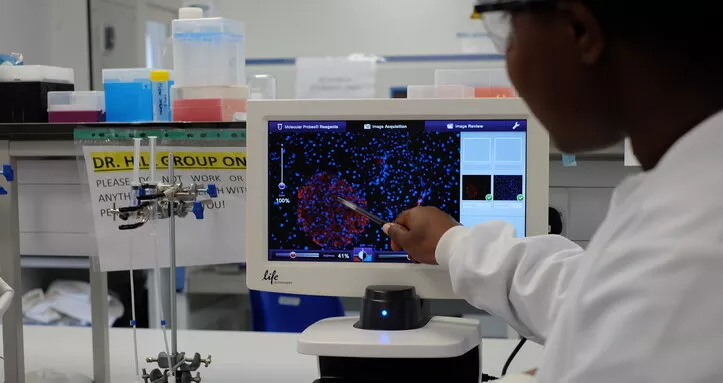
Our scientists have found a better way of transplanting islet cells, paving the way for wider use of this treatment. They showed that in mice transplanting islet cells alongside proteins that stimulate cell growth in the liver helped to reduce the number of islets needed and improved blood glucose (sugar) levels.
Islet transplants are used to help people with type 1 diabetes who have very severe hypos and can’t recognise the warning signs of low blood sugar.
In islet transplants, clusters of cells (called islets) are taken from a donor pancreas and given to a person with type 1 diabetes. This means that people are able to make some of their own insulin again for a time, helping to keep their blood sugar levels within their target range and avoid hypos. For this group of people, islet transplants can be life changing and life-saving.
Giving islets a helping hand
But islet transplants aren’t perfect. Doctors transplant donor islets into a vein in the liver and over the next couple of weeks, new blood vessels form that connect islets with blood vessels in the liver. This is called engrafting and is essential for islets to survive in their new home, and to start to make and release insulin. However, usually about 60% of the donor islets fail to successfully engraft and die.
This means lots of donor islets are needed to have an impact on blood sugar levels. There are only a small number of donor pancreases available for islet transplantation each year, so this limits the number of people with type 1 diabetes who could benefit from them.
Now, with our funding, Professor Shareen Forbes and her team at the University of Edinburgh in collaboration with investigators at the University of Nottingham have pioneered a new transplantation technique that helps islets engraft in the liver, so that they work better and fewer are needed.
Professor Forbes transplanted islets into a group of mice with type 1 diabetes alongside an injection of proteins, called a growth factor, which targeted the liver. They'd previously shown that the growth factor could help cells in the liver to grow and divide. They compared how successful this method of transplantation was to another group of mice who received standard islet transplants, without the growth factor.
The researchers found that 75% of mice given islets alongside the growth factor had healthy blood sugar levels 30 days after the transplant, but in the standard transplant group no mice did.
The group receiving the new type of transplant had a higher number of islets successfully engrafted in the liver and there was more new blood vessel growth, helping the donated cells to survive and produce insulin for longer.
What’s next?
These are promising findings, but the researchers have so far only tested the technique in mice. We now need further studies to check if this technique is safe for testing in clinical trials with people with type 1 diabetes.
If these clinical trials show that this approach is safe and effective in people, it could reduce the number of donor islets needed for each transplant, meaning many more people with type 1 diabetes could benefit from the treatment in the future.
We know that around 30% of people with type 1 diabetes have hypo unawareness and it's thought that between 5-10% of people with type 1 could benefit from an islet transplant if they were more accessible.
Dr Elizabeth Robertson, our Director of Research, said:
“Islet transplants can be life-changing for some people with type 1 diabetes who are unable to recognise when they are having a hypo. However there currently aren’t enough donated pancreases and the treatment itself isn’t yet as effective as it could be.
This research, supported by Diabetes UK, is a promising step forward, that could in future mean fewer donor islets need to be transplanted for successful treatment, ensuring transplants are more widely available for people who could benefit.”
